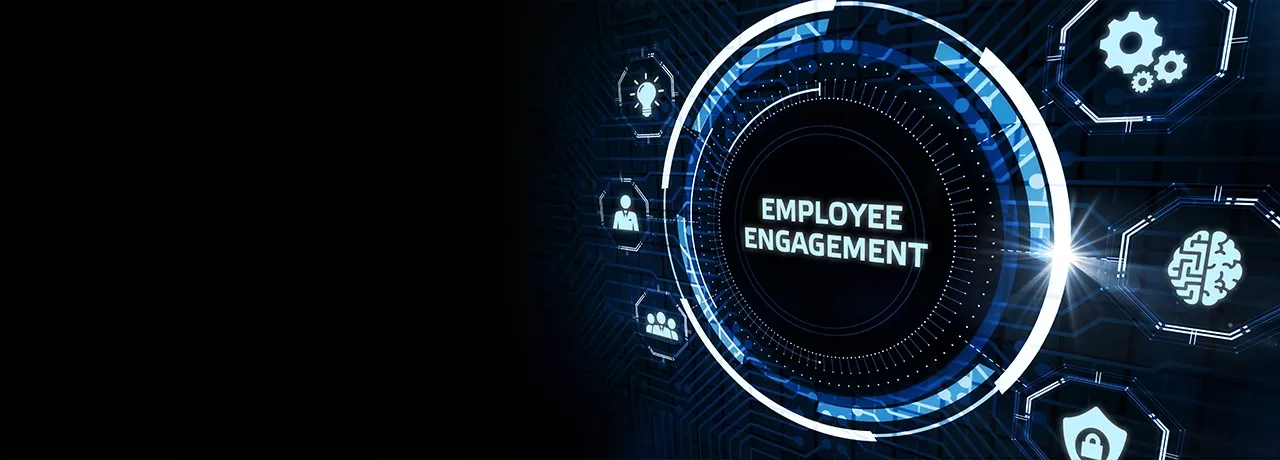
Employee Engagement is Not Just an “HR Thing”
April 5, 2023
By Kelley Briggs
The now popular term “employee engagement” was originally coined by Professor William Kahn with Boston University in 1990 in his paper, “Psychological Conditions of Personal Engagement and Disengagement at Work.”
Workforce reached out to Kahn in 2015, 25 years later, to see how his perspectives may have evolved or changed. His perspective led to some key takeaways: He still saw the problems related to employee engagement as “much the same.” He also saw the work of employee engagement as a responsibility of organizational leaders, saying they need to “approach employees as true partners, involving them in continuous dialogues and processes about how to design and alter their roles, tasks and working relationships.”
Eight years later, employee engagement is still top of mind for organizational leaders and their HR teams. And, over this time, many may have paid heed to Kahn and others’ stance that leaders own and are responsible for employee engagement — not just HR.
Integral Tie Between Employee Engagement and Business Results
Perhaps the COVID-19 pandemic played a role in conveying the integral tie between employee engagement and business results. Those companies that were able to maintain engagement in a remote or hybrid work model have thrived. Those that weren’t have lost ground in terms of employee retention, customer impact, and business outcomes.
Gallup reports that employees who are engaged are 14% more productive and that companies with engaged employees are 23% more profitable than those with disengaged employees. Knowing this, it’s puzzling to see organizations still deeming employee engagement “an HR thing.”
Profitable companies know that employee engagement starts with a positive company culture. Culture, of course, starts at the top in the C-suite. So, what can organizations do to rally together cross-functionally to improve employee engagement and improve their bottom line? Here are a few employee engagement strategies:
Become a “Destination” Employer
Destination employers are companies that both current and potential employees consider to be ideal for establishing and growing their careers. Companies that provide a fantastic employee experience and nurture a positive culture have high engagement and no trouble attracting new talent. They haven’t fallen victim to the “Great Resignation.” And, in fact, they’re buoyed by their own team members who are eager to refer the company they love working for to others.
Becoming a destination employer doesn’t happen overnight and it doesn’t happen solely through the efforts of HR. It happens through collaboration from the top down, across all areas of the organization as everyone works together to foster a strong, inclusive culture and contribute to the organization being considered an employer of choice.
Engagement Knows No Boundaries
Employee engagement isn’t an event — it’s a process. A process that extends beyond the HR department. Companies that will be successful at engaging employees, and keeping them engaged, consider the employee engagement process to be a company-wide initiative.
There is a wide range of employee appreciation activities and initiatives – including an employee recognition program – that can help deploy recognition in the workplace and drive employee engagement. For instance:
- Service anniversaries at significant milestones (e.g., after their first year with the company, at 5 years, 10 years, 15, 20, etc.), and more recently annually (at 2 years, 3 years etc.) since the U.S. Bureau of Labor Statistics shows many employees change jobs before the 5-year mark.
- Other milestones that might be either personal or professional — a marriage, buying a house, the birth of a child, service awards, and all the other milestones across the employee journey.
- Team successes and accomplishments like project completions, software migrations, sales wins, process improvements, etc.
But it’s not just company-sponsored formal recognition efforts that can make a positive impact. In fact, McKinsey research shows that praise and recognition by a direct manager is more motivating than a cash bonus. In addition, peer-to peer recognition can be even more impactful than recognition from supervisors and managers. It truly “takes a village” to boost engagement — and keep it boosted.
Clearly, there is absolutely no reason any recognition program should fall solely into HR’s hands. The greatest cause of a workplace engagement program’s failure is when organizations deem employee engagement the responsibility of HR. To give your program the greatest chance of success, make it a company-wide initiative.
Communication
Today’s employees expect consistent and transparent communication and smart organizations give them just that. Employees demand a clear vision from top leaders, continuous communication on where the company is headed, and a line of sight into how their actions impact that direction.
When these communication needs are met and trust develops, employees feel valued and become brand champions, exhibiting high levels of engagement. This is the point when they will become your greatest brand ambassadors, to both potential employees and customers.
Again, communication isn’t solely the responsibility of HR. Key communication messages should also come from the C-suite, marketing and a host of other functions. In Connects, the Inspirus employee engagement platform, “Spotlights” are an efficient way to transmit news from any department to the entire organization.
Connection
Employees can’t be engaged if they’re not connected. With many workers still remote (and staying remote), connecting employees to keep them engaged and productive requires accessible and easy-to-use technology solutions.
Forward-thinking companies are now providing a “best-of-both-worlds” hybrid work atmosphere where all employees can benefit from occasional in-person teamwork and collaboration with peers while still maintaining control of their commutes and schedules. One of the key drivers of employee engagement is implementing a successful hybrid work model, of course, is using the right technology to help the workday flow easily and efficiently. This is especially important when you have employees spread out all over the country — or even the world.
Taking a broader approach and more shared responsibility for employee engagement from the top down is a step in the right direction. No, employee engagement is not “owned by HR.” Employee engagement is a company-wide effort. When everyone comes together to contribute to a positive team culture, employees are more engaged, more satisfied and more productive — and organizations thrive.




